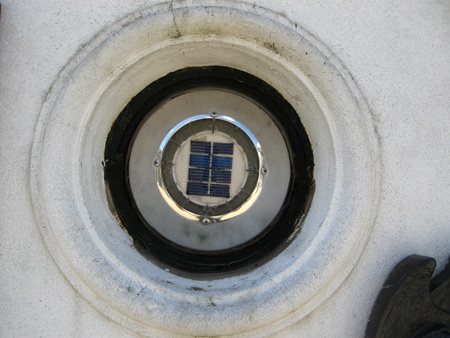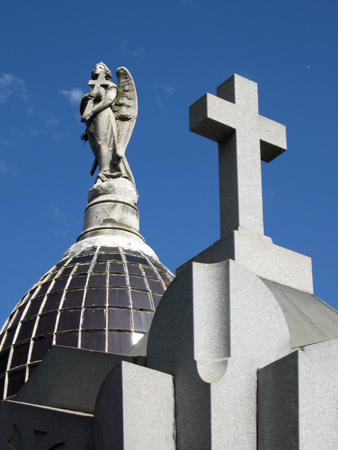
Documenting Recoleta Cemetery in Buenos Aires since 2007
Bravery & strength are character traits commonly identified with lions. Used historically to decorate coats-of-arms of several royal families, even pop culture praises lion-like qualities in “The Wizard of Oz” & “The Lion King.” What better animal to protect loved ones during difficult times? A few large felines blend in with their domesticated relatives in Recoleta Cemetery.
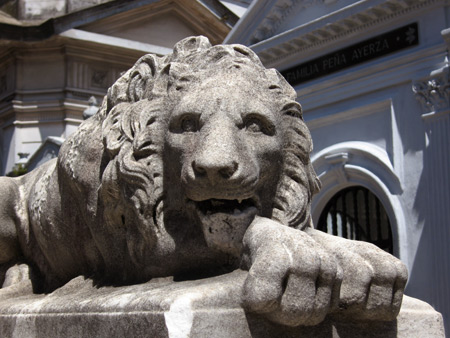
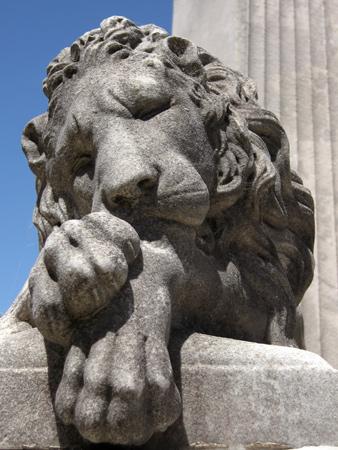
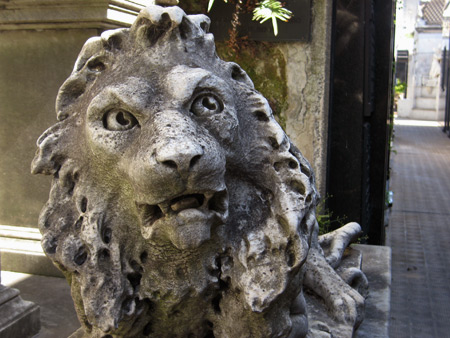
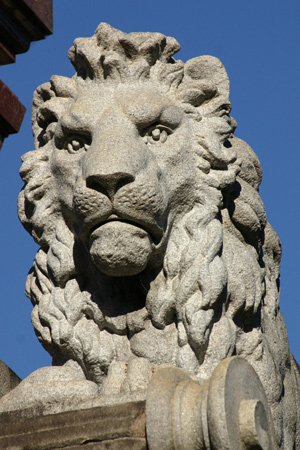
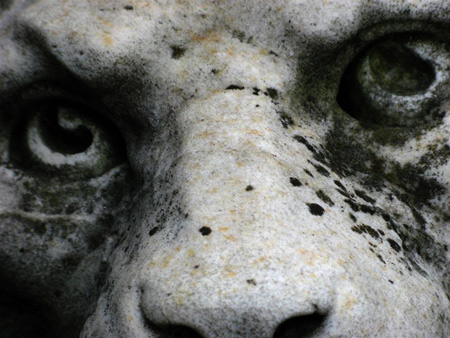
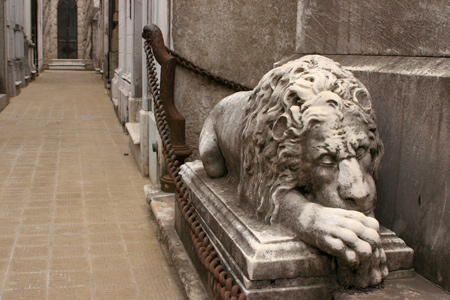
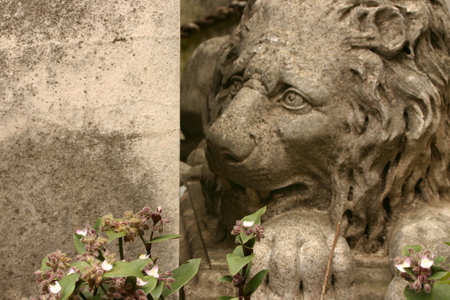
Lots of information can be found out about the occupants of a particular tomb, even with only basic Spanish… just stop & study the plaques. A picture is worth a thousand words.
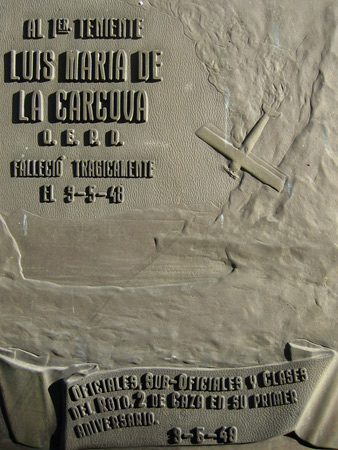
Upper text reads: “To First Lieutenant Luis María de la Cárcova, RIP. He passed away tragically on 03 May 1948.” As is customary in Recoleta Cemetery, this plaque was given on the first anniversary of his death by those who miss him… in this case, fellow military personnel.
1 CommentAlthough Recoleta Cemetery doesn’t fit into the standard, macabre mold—on the contrary, it’s usually calm, relaxing & peaceful no matter how many tourists are packed inside—it’s still a cemetery. Some might believe that the spirit lives forever, but the body certainly doesn’t. Keep in mind that Recoleta Cemetery is a mix of tombs & mausoleums… enclosed structures with caskets inside. Now imagine the interior of your favorite tomb during the long, hot summers in Buenos Aires. It isn’t pretty.
Fortunately, mausoleums come equipped with ingenious & decorative types of ventilation. The most common are glass panels on the rooftop with a gap that allows air to circulate freely. But due to their fragile nature, ceiling vents are usually the first to show signs of decay. Panels fall out over time & go crashing into the interior. Hailstorms wreak havoc. But if panels are decorated or colored, they add a very special touch:
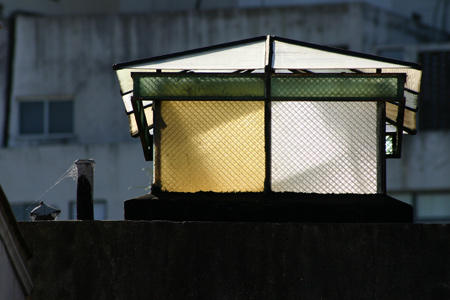
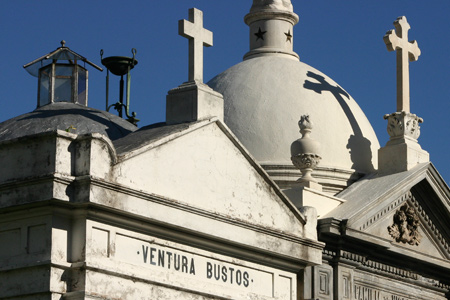
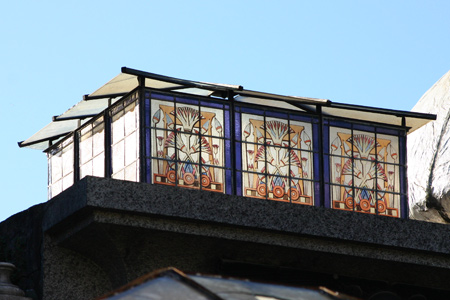
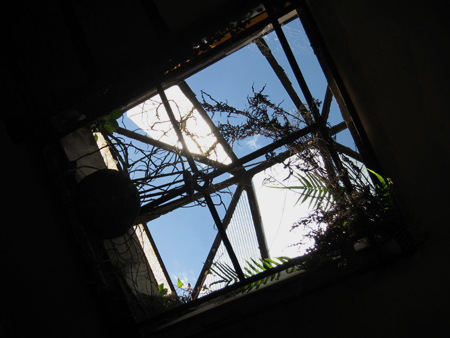
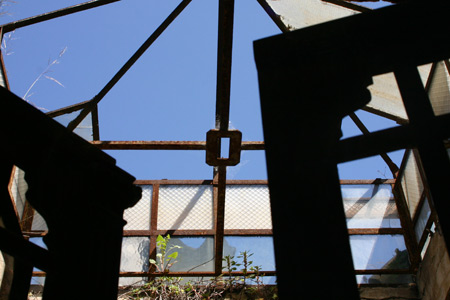
Occasionally the upper part of domes will have a subtle grill incorporated:
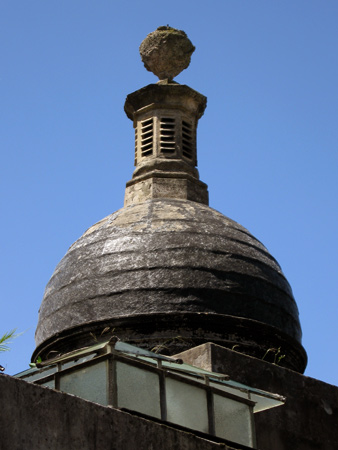
Modern options break the architectural harmony of the place, but no one seems to mind as they spin in the breeze:
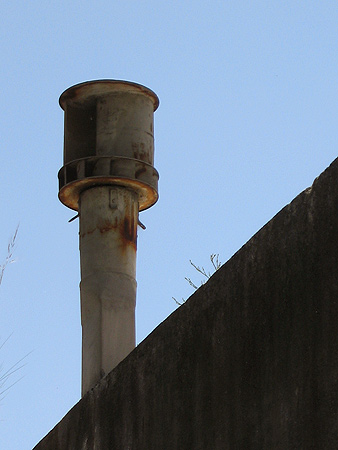
The most creative vent attaches solar cells on the exterior to power the fan inside:
